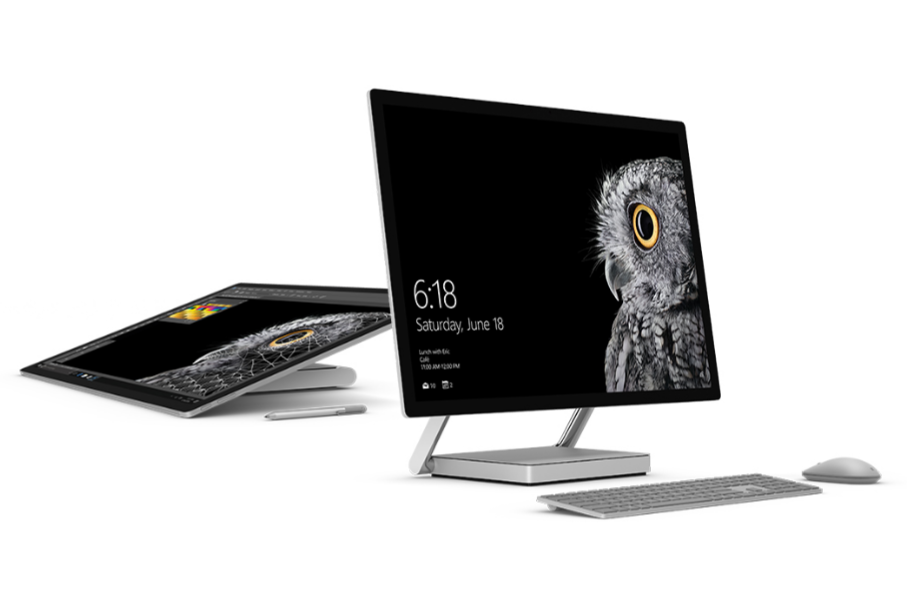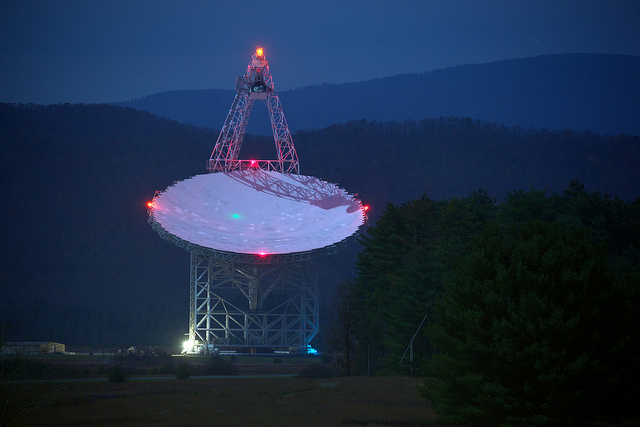New Horizons | Photo: NASA/JHUAPL/SwRI
Our “Top Three” this week are all combination stories: two about Tesla, an Apple and Microsoft release competition, and a smattering of stories about signals from space. It’s the first weekly roundup of our fourth year online(!): Sunday 30 October 2016, check it out!

Two About Tesla
If you haven’t been following the details, you could be forgiven for not knowing that Elon Musk’s electric car company hasn’t been terribly profitable. Sure it was able to pay off all its government loans after 2008 faster than any of the other car companies. Sure, it’s got over four hundred thousand pre-orders for the Model 3, which doesn’t even exist yet, but all that said, it still hadn’t made a quarterly profit. Well, now it has. While meager, the $22 million 3rd-quarter 2016 profit announced this week was a pleasant surprise to investors, who really hadn’t expected to see a profit from the company anytime soon. Starting a car company is unlike most other kinds of ventures — not only do you need to create a product, which for (say) software companies is 99% of the game, you need to create an incredibly complicated and potentially fatal product that meets thousands of safety guidelines to an extremely reliable standard. And on top of that, Tesla’s trying to do it all without most of the currently-existing technologies, like internal-combustion engines or a pre-existing nationwide refilling/recharging network. They’ve even got to create a whole new factory for the creation of the batteries at scale, to keep costs down — and they’re doing it. So making a profit on top of that, this early in the game? That’s huge.
The second piece of news about Tesla was the announcement of the all-in-one solar home power system, which is why Musk wants Tesla to buy SolarCity (and has put an offer on the table that shareholders of both companies have yet to ratify). The new solar-roof system is, number one, gorgeous. The solar roofing tiles are the roof itself — none of these clunky after-market panels that by design have to leave part of the roof uncovered. They’re made of sapphire glass, which should stand up a whole heck of a lot longer than your old roof, and while they’re only 98% of the efficiency of similar-sized panels, the company is working with 3M to fix that. Add to it a Tesla Powerwall for storing the power without needing to sell it back to the grid at the often reduced prices mandated by certain states these days, and you’ve got the beginnings of the “killer app” of solar power. As the price for power storage falls, and the efficiency of solar generation improves, you’re going to see a lot more people just eschewing the grid altogether. You can read more about Tesla’s 3rd-quarter profit at Vox, and more on the solar roofing at TechCrunch.

Apple’s Announcements Undercut?
You can find a lot of coverage of Apple’s “Hello Again” announcement show online, much of it positive, but to my mind the whole things was incredibly underwhelming, especially in light of the release of Microsoft’s Surface Studio two days earlier. The problem is that in branding it “Hello Again,” hearkening back to their 1984 announcement of the very first Mac, they left us expecting big things — the very first Mac was, in retrospect, a Very Big Deal. But what we got this week just wasn’t: thinner, faster laptops with nicer (but still glossy!) screens, that ditch the function keys (and the escape key!!) for a narrow touchscreen at the top of the keyboard that can’t be used for fun, and that your cat will probably use to screw up your documents in new and exciting ways; a 4K or 5K or however-many-K pair of bog-standard-looking desktop screens made by LG; and a streaming-service aggregator app for Apple TV called “TV” that doesn’t include Netflix or Amazon Video and is therefore pretty much worthless. Meanwhile at the same time Microsoft unveiled this pretty little desktop thing called the Surface Studio which, despite running Windows (a serious flaw, but which millions of people seriously don’t seem to mind), seems like an actually innovative piece of kit — especially with the weird (esoteric? unnecessary?) but probably still fun “dial” thing. Frankly the biggest plus to all of this week’s announcements is the haunting and dramatic rendition of “Pure Imagination” Microsoft used in its Surface Studio announcement, which I think is by a singer named Stephanie Tarling and at moments really channels Woodkid (seriously, listen to the music in the video below).
The lesson for the week is this: if you’re going to get people’s expectations up, you have to deliver. Meanwhile if people have no expectations of you (Microsoft, were all those original Surface ads deisgned to lower our expectations?) totally okay things will look great if paired with awesome music. Check out the videos below (MacRumors’ coverage of the Apple event and the commercial for the Surface Studio) for more.

Three Signals From Space
The first of three “space signals” stories this week concerns NASA’s New Horizons Pluto probe, which just this week has finally sent all the data back home from that one-day flyby of the dwarf planet/ninth classical planet/largest binary planets, a total of roughly six and a half gigabytes (you’ll see it reported as over 50 gigabits elsewhere, same thing) transmitted over 3.5 billion miles at a rate that would make your 1990s dial-up seem downright speedy. According to NASA, the data will be checked and verified before the databanks aboard the probe are wiped in readiness for the January 1, 2019 flyby of the probe’s next target: the red-tinted Kuiper Belt Object 2014 MU69.
Next up, we have the latest on “Tabby’s Star,” otherwise known as “that alien megastructure star” that’s getting dimmer and dimmer over the last hundred years (and even faster in the last decades) and we aren’t sure exactly why. The Yuri-Milner-Funded Breakthrough Listen project is going to point the Green Bank radio telescope at the heart of the United States National Radio Quiet Zone, the most powerful steerable radio telescope on the planet, at the peculiar star for three eight-hour nights over the next few months. Of course we don’t expect much — everybody and their dog has already tried looking at the darn thing to figure it out, up to and including the Hubble Space Telescope — but you never know. You can read more about that at phys.org.
And lastly, we have the news that two Canadian scientists at the Université Laval in Canada have submitted a paper to the arXiv preprint server detailing a study that’s found 234 anomalies that — in theory — could be evidence of extraterrestrial life trying to tell the universe about itself. Basically, they theorized in an earlier paper that if ETs were trying to let everyone know they exist, they’d use light pulses, and when they went looking through the data from 2.5 million stars, they found a couple hundred that were making this kind of “noise” in ways that couldn’t be otherwise explained by, well, at least the things they thought of that could also explain it. And as a bonus, these signals come from stars pretty similar to our own. From the abstract:
Let me reiterate: this isn’t proof of 234 alien civilizations trying to say hello. It’s 234 signals we might not know how to explain yet. But hey, that’s pretty cool in itself.
ICYMI
If you missed anything we got up to here this week, now’s your chance to check it out!
- On Monday I expressed my doubts about a magnetic headband that’s supposed to alter your mood
- On Tuesday I summed up Elon Musk’s “Ask Me Anything” on reddit last weekend
- On Wednesday I talked about the slight possibility that the universe isn’t expanding faster and faster after all
- On Thursday I talked about the burden of proof and how my hotel in Texas wasn’t haunted, and
- On Friday, Elle shared a little good news about the funding of the new site Anime Feminist
Send some time checking them out — you won’t regret it!
Best of the Rest
Best of the Rest’s a little shorter since, instead of three stories, I covered seven of them, but here it is, the things I didn’t get to this week:
- Scientists have discovered that the common Swift can stay airborne constantly for up to ten months. TEN MONTHS.
- Showrunner Bryan Fuller is leaving the new Star Trek series, which will cause delays
- New, high-resolution photos of Schiaparelli’s crash site are… well they’re a little odd
- A national rail service in Switzerland, SBB, will start selling Bitcoin through its ticket kiosks next month, and
- The lovely folks at several UK Toys “R” Us locations are going to have an autism-friendly “quiet hour” November 6
***
Thanks for reading! Except for the very *very* occasional tip (we take Venmo now!), I only get paid in my own (and your) enthusiasm, so please like This Week In Tomorrow on Facebook, follow me on Twitter @TWITomorrow, and tell your friends about the site!
If you like our posts and want to support our site, please share it with others, on Facebook, Twitter, Reddit — anywhere you think people might want to read what we’ve written. If there’s something you think we’ve missed or a story you’d like to see covered, drop us a line! Thanks so much for reading, and have a great week.
***
Richard Ford Burley is a human, writer, and doctoral candidate at Boston College, as well as an editor at Ledger, the first academic journal devoted to Bitcoin and other cryptocurrencies. In his spare time he writes about science, skepticism, feminism, and futurism here at This Week In Tomorrow.

